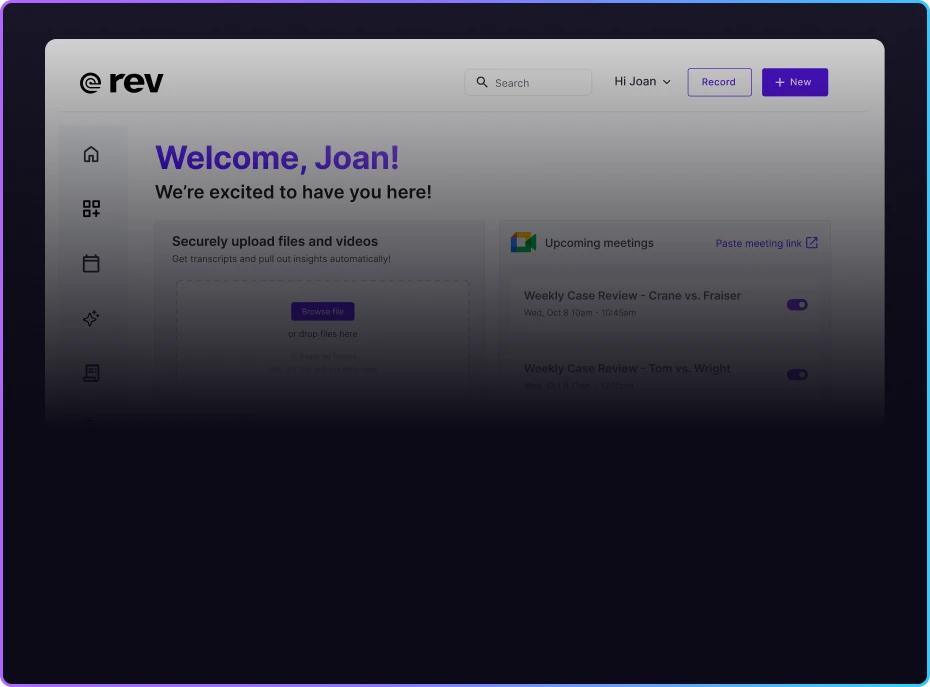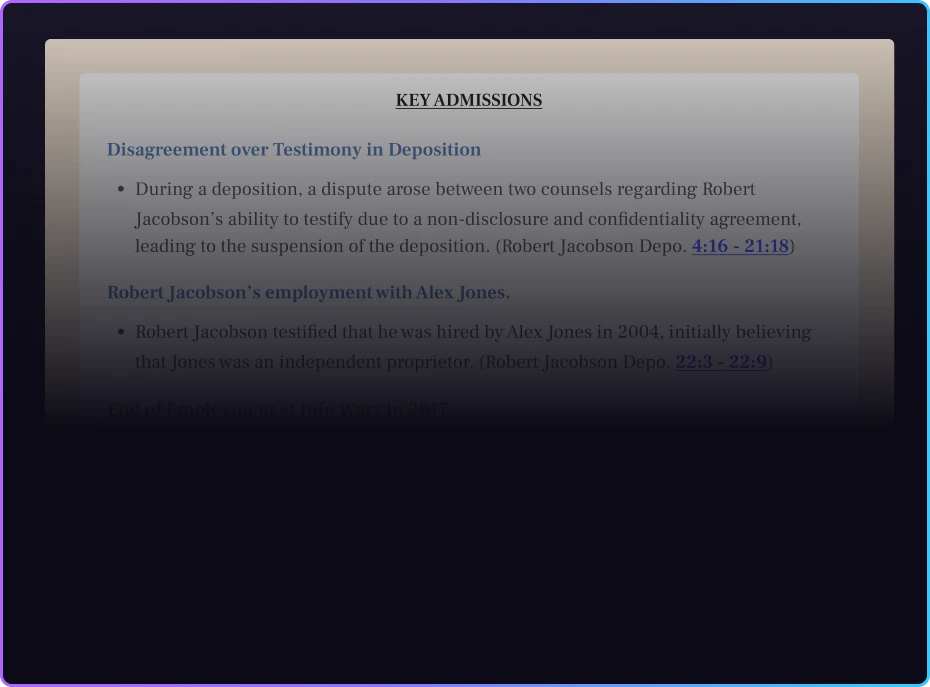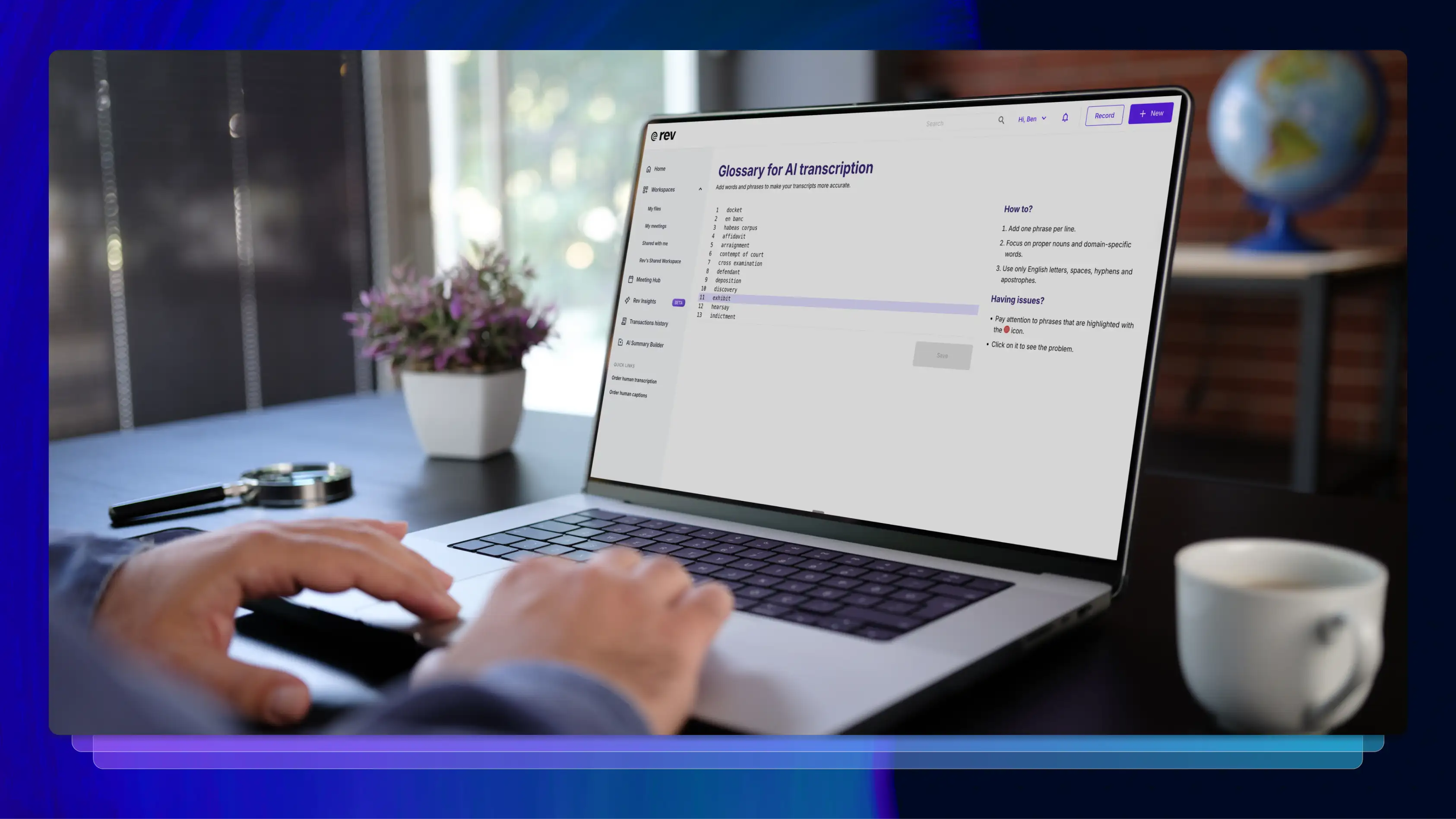3 Ways Criminal Law Teams Can Use Speech-to-Text Tools
With speech-to-text, criminal legal teams can quickly transcribe evidence, streamline casework, and prepare strategies accurately and securely.

The story of automatic speech recognition (ASR) technology started in 1952. Decades before Alexa or Siri, there was AUDREY, an “Automatic Digit Recognizer” designed by Bell Laboratories. The system “required a room full of electronics” and consumed lots of electricity, but it could identify the spoken numbers zero through nine with up to 90% accuracy. AUDREY may have been a far cry from the pocket-sized powerhouses of 21st-century tech, but in a way, she laid the foundation for the voice tech that’s followed since.
AUDREY’s creators could never have foreseen how the technology they originated would change the world. Today, advanced ASR solutions like Rev and Reverb are changing the way business is done across industries, helping professionals streamline workflows and unlock new levels of efficiency.
That’s especially true in the legal field, where speech-to-text tools are empowering attorneys, court reporters, legal assistants, and others to be at their best, especially in criminal law.
How Do ASR Tools Help Criminal Attorneys?
One benefit of speech-to-text tech is immediately clear: These tools require nothing but one’s voice, automating tasks that may otherwise demand a significant chunk of time and energy.
What’s less immediately clear is the sheer breadth of what tools like Rev offer prosecutors and defense attorneys, from transcribing audio evidence to creating searchable case records. And on top of that, speech recognition is a foundational technology that enables the use of more complex, AI-reasoning-based workflows.
There are many use cases for AI-powered voice tech in criminal law, and just as many benefits for legal pros, from boosting productivity to helping combat burnout. That’s what makes it valuable to outline these ASR applications and how firms can integrate them into their workflows.
Here are three ways criminal law teams can deploy speech-to-text solutions.
1. Transcribing Audio Evidence
The handling of audio evidence is a key application of speech-to-text tools. A platform like Rev’s allows legal pros to convert evidentiary recordings into searchable, custom-formatted, AI-summarized transcripts that make it easier for criminal attorneys to assess this evidence, even in outsized amounts, and identify material facts that shape strategy and key decisions.
Audio evidence can come in many forms, including recordings of:
- Court proceedings
- Depositions
- Interviews
- Interrogations
- Jail calls
- Surveillance
- Arbitrations
Rev users can turn this evidence into verbatim, time-stamped legal transcripts, preserving the integrity of the legal record while creating a searchable source of truth and capturing any key admissions.
This is especially critical in criminal justice, where small prosecution and defense teams increasingly struggle to manage evidence overload. With the right ASR tool in hand, these overwhelmed attorneys can process digital audio in a fraction of the time.
2. Reviewing Video Evidence
ASR solutions can be just as beneficial when it comes to navigating video evidence, another challenge that can threaten to overwhelm even the most seasoned criminal attorneys. It’s not easy to understand where the information that’s critical to a case lives, but with the right tools, you can find it quickly and consistently with relative ease.
By converting video into searchable transcripts, ASR tools, especially those augmented with other AI capabilities, can help criminal attorneys accelerate their understanding of a case. Attorneys on both sides, defense and prosecution, have stated that they can read faster than they can listen—that alone is a critical difference maker.
Rather than hunkering down to watch hours of bodycam and dashcam footage, surveillance videos, and cellphone or traffic cam recordings, legal teams can take in all of that raw evidence at a glance with ASR tools, leveraging keyword searches, easy file sharing, and AI-assisted identification of key moments.
By empowering prosecutors and defense attorneys to make quicker work of video evidence review, ASR tools help to ensure that due process is for everybody, not just those who can afford it.
3. Creating Records for Case Preparation and Strategy
All of the applications above create written records, and that brings us to our third and final application. Criminal attorneys can leverage these records to optimize their trial readiness, as well as their overall theory of the case.
Though this application is interconnected with the others, it’s worth considering on its own because creating written records of audio and video evidence is only half the battle. It’s up to legal teams to take those building blocks and craft a compelling case narrative out of them.
Transcripts created with Rev are scannable, searchable, and shareable, saving legal pros the time and mental energy they might have otherwise expended poring over lengthy documents in search of key details. And AI-assisted summaries and analysis surface and authenticate critical insights without altering the record, meaning legal teams have the insights they need, the bandwidth to take action, and the confidence to trust their transcripts.
Which Tools Are Right for My Firm?
This is the million-dollar question—but if you’ve been reading closely, you already have an answer. Speech-to-text tools must create legal records that are accurate, secure, and useful. There are many tools available to criminal attorneys, but few feature industry-leading ASR technology, greater than 99% transcription accuracy, and HIPAA-, SOC 2 Type II-, GDPR-, and ISO 27001-compliant data security. And there’s only one Rev.










.webp)




